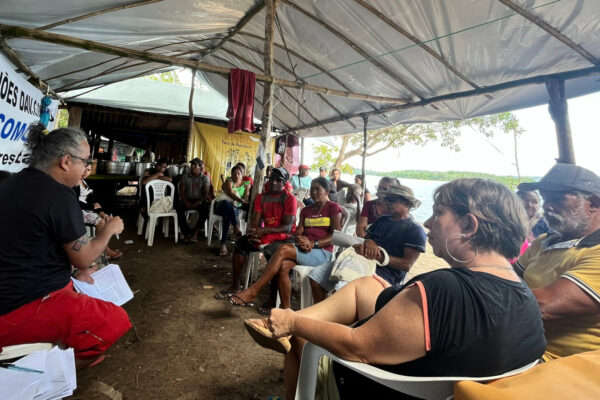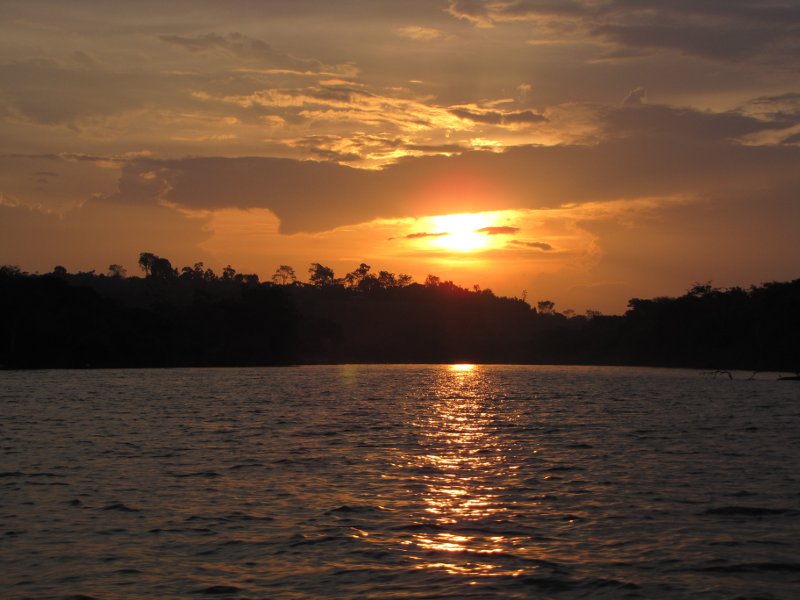
“It struck me that to condemn a river is to condemn ourselves: the Amazon – and all of humanity by extension – cannot bear the destruction of these vital waterways.”
Floating down the Xingu River’s “Big Bend” in the Brazilian Amazon last November I was struck once again by the splendor of this unique environment. Its waters low for the dry season, the Xingu’s magnificent white sand beaches stretched for miles while rock islands emerged from the current, shrouded in verdant shrubs and trees. Mesmerized as always by the raw, primeval beauty of this place, I was shocked awake from my daydream by huge walls of earth, rock, concrete and steel rising imposingly before me. This is the aberration of Brazil’s Belo Monte dam: stagnant waters, leveled forests, shattered communities and the death knell of an Amazonian paradise.
Altamira
My return to Altamira after a two-year absence brought many revelations. It is difficult to comprehend the transformation of a sleepy outpost into a congested urban sprawl without walking the city’s streets, taking in its explosive and chaotic growth through the drone of a thousand motorcycles, the hurried pace of its inhabitants. It’s no longer advisable to walk the streets at night; violent crime is the norm, with a 25% spike in homicides since 2012. Drug abuse and child prostitution are commonplace as local police are unable to cope with the explosive criminality produced by the region’s frenzied population boom.
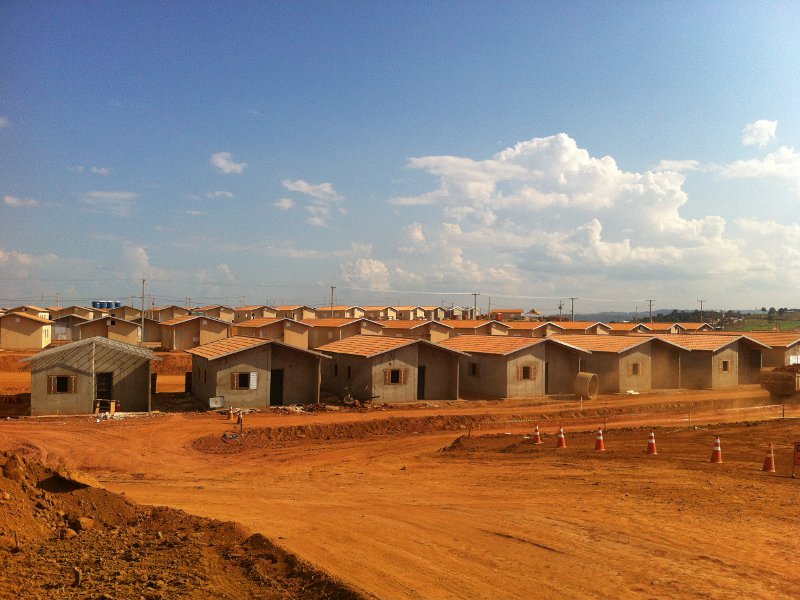
“It’s good to see this construction, but you can’t eat houses, you can’t drink houses.”Leonço Arara
Much like Brazil’s Amazon mega-projects that precede it, Belo Monte brings misery, corruption, lawlessness, and impunity, all wrapped in a false package of “development.”
“For years, we’ve been predicting this dire reality for our city,” laments Antônia Melo of the Xingu Alive Forever Movement (MXVPS). “People dismissed us as crazy, as being against progress. Now these same people come to us with their tragic stories asking for support, betrayed by the reality of this project and its impacts on all of our lives.”
From the MXVPS office Antônia continues her 30-year struggle in defense of the Xingu and its peoples. Far from being discouraged by the project’s advancement, she and her colleagues remain defiant, demanding that justice be served and that the project be definitively paralyzed. As thousands of Altamira families are evicted to make way for Belo Monte’s flooding, Antônia also strives to defend the right to proper indemnification and dignified housing for displaced people.
The dam building consortium Norte Energia touts its “model” resettlement program, where displaced urban residents receive a house in one of four new neighborhoods under construction on the periphery of Altamira. Many resettled families come from the city’s most precarious neighborhoods, notorious for their lack of basic sanitation, grinding poverty, and high crime rates, so the promise of new housing would seem an improvement. Yet the consortium never misses a chance to cut corners when dealing with dam-affected peoples: built with flimsy masonry and already showing alarming deterioration, Norte Energia‘s concrete shacks are disgraceful.
Back on the outskirts of Altamira, I was taken through a home with a leaky roof, its unsuitable design stifling in the Amazonian heat, its residents disheartened, while hundreds more families still await this sad solution. Are these the improvements in living conditions, so touted by the Dilma Rousseff administration? How the consortium could hype this resettlement program as a “success” speaks volumes for its government-sponsored propaganda campaign as well as its disdain and criminal negligence towards the people and community erroneously framed as Belo Monte’s “beneficiaries.”
Progress?
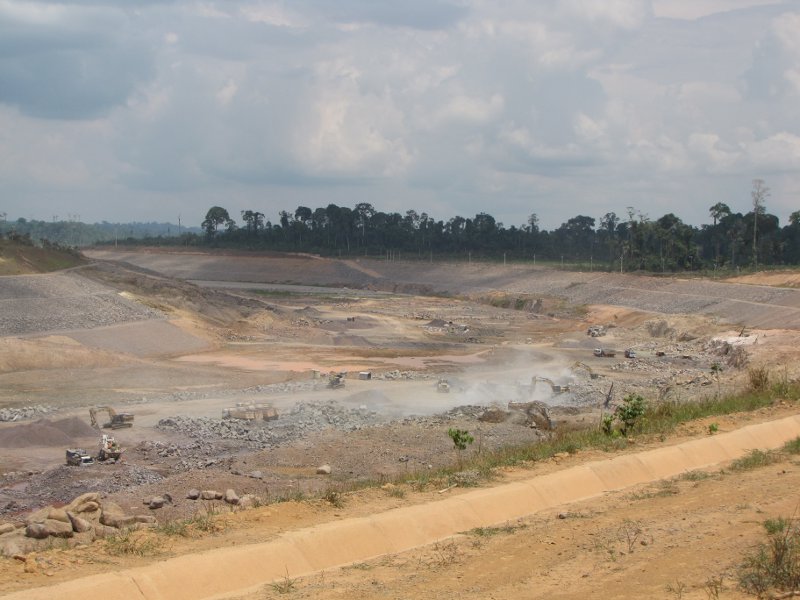
While Altamira’s chaos came as a shock, little could prepare me for the transformation underway at the dam’s work camps. Where small dirt roads once snaked through lush jungle, a highway slices through leveled forest, leading to Belo Monte’s colossal canal. For miles, an army of bulldozers kicks up clouds of dust, excavating tons of earth and rock dynamited from the ancient forest floor. Impressive in its grotesque power, the dam’s canal is a tribute to the folly of this project, which aims to divert 80% of the mighty Xingu’s flow away from its natural course to the dam’s powerhouse.
Gazing upon Belo Monte’s powerhouse mega-dam evokes comparisons with the villainous works of Hollywood lore: it struck me that Dilma Rousseff longed for her very own Death Star. An enormous wall of concrete and steel rises adjacent to the Xingu, erected upon upon slabs of carved stone slots destined for the dam’s hydroelectric turbines.
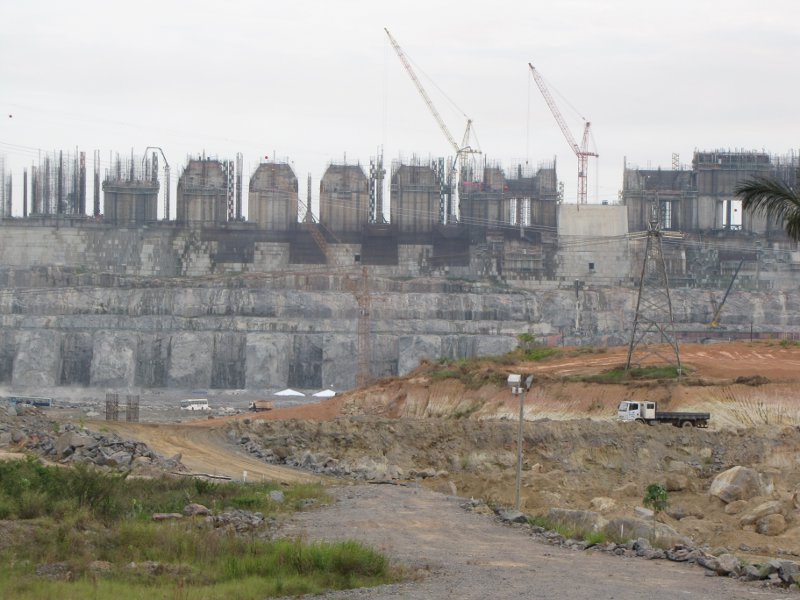
Witnessing the macabre progress underway on Belo Monte’s canal and powerhouse is a stunning experience. There are no words for the sadness these places bring to all of us who fought to defend the Xingu and its peoples from this malicious man-made tragedy.
In the shadows of a mega-dam
According to Brazilian journalist Eliane Brum, Belo Monte has suspended judicial order and the rule of law, causing a catastrophe for the Xingu’s indigenous peoples and their precarious environment. In a searing interview, Altamira-based federal prosecutor Thais Santi equates the project to “indigenous ethnocide”, where 11 indigenous territories are profoundly impacted by the mega-project, their communities rendered highly vulnerable to cultural destruction, while the government takes no meaningful measure to protect them. Having followed the dam’s progress since 2012, she deplores its wanton illegality and its creation of “a world in which anything is possible.”
These brutal assessments did not spring from someone’s imagination; they are the fruit of the laborious analysis of specialists and observers bearing witness to Belo Monte’s deplorable reality. As detailed by the Guardian‘s Jon Watts, the indigenous peoples of the Xingu’s Big Bend live in a state of limbo as the project draws near completion, their way of life hanging in the balance.
In the indigenous Arara village located on the banks of the Xingu, young leader Josené explained to me how the Arara led an action this year that paralyzed the construction of Belo Monte’s powerhouse. Protesting Norte Energia‘s failure to comply with its responsibility to build new housing in the Arara village as part of required mitigation and compensation measures, warriors burned two worker transport buses. Their charred hulls remain, a poignant reminder of dam-affected peoples’ indignation.
“The [consortium’s] manager arrived at our protest and shook his head with shame when he saw the burnt buses,” said Josené. “I told him: ‘you should be ashamed, but not of us! We’re ashamed of you for failing to meet your commitments!'”
Norte Energia began construction on Arara houses shortly after the direct action, apparently motivated by the threat of further damages. The buildings appear to better quality than the hovels the consortium is passing off on Altamira residents, however they won’t solve Belo Monte’s looming ruin: when the Xingu is definitively dammed and 80% of its water is diverted away from Josené’s home, no amount of mitigation will make the Arara’s loss bearable.
The elder leader Leonço Arara summed up this paradox, gazing regretfully on the houses: “It’s good to see this construction, but you can’t eat houses, you can’t drink houses.”
“We can’t find fish in the river or game in our forest,” said Osimar Juruna, a leader from the Big Bend’s beleaguered Paquiçamba village, conveying the distress of local indigenous peoples faced with losing their river, the lifeblood of their communities. “They have already been driven away by the dam. When there’s no more water, then what? We have no intention of leaving our land!”
A disaster foretold
As I floated down the Big Bend I realized that it was the last time I would ever see its shining banks, verdant islands and rushing rapids as they were. In just a few months Norte Energia‘s bulldozers would raze the Xingu’s forests to make way for the dam’s reservoir, while condemning life downstream of its giant concrete wall to a permanent and deadly drought. I dreaded these events most for the people who remain on the Big Bend, but also for all the fish and forest animals that will perish without their breeding grounds and forest sanctuary. It struck me that to condemn a river is to condemn ourselves: the Amazon – and all of humanity by extension – cannot bear the destruction of these vital waterways.
Along with the remorse and sorrow I felt at this moment was a vivid anger: anger that a government would wantonly carry out such crimes against humanity and against nature, and anger that a corrupt project consortium could be allowed to operate above the law, pocketing vast sums of public funding and providing devastation in return. As revelations emerge into the extent of the ingrained corruption of Belo Monte’s builders, it grows clear that we’re not dealing with a legitimate business entity. We’re dealing with a sort of mafia on the Xingu, the sort of immoral organized crime that predatory capitalism encourages.
Antônia Melo reminded me that we take no solace in knowing that we were right to denounce Belo Monte. Its disaster was announced long before the project broke dirt; we brought these facts to the world. Our aim was true, but our demands were not enough to preserve the Xingu and its peoples, nor to put the brakes on the Brazilian government’s ruthless and unnecessary Amazon dam-building agenda. Leaving destruction in their wake, Dilma’s bulldozers now turn toward the Tapajós River, Brazil’s last undammed Amazon tributary.
But there is light in all of this darkness and it’s enshrined in the struggles of the Amazon’s peoples for social and environmental justice. The battle against Belo Monte is far from over, as January’s protests illustrate. Many lessons have been learned, steeling resistance and resilience for the coming clash over the government’s plans to wreck the spectacular Tapajós.
As if saying goodbye, the Xingu produced a stunning Amazonian sunset as our boat glided back into Altamira’s port. While these were tragic circumstances, I was heartened by all that we have done, and will continue to do, to defend this exceptional place.
Xingu Alive Forever! Xingu Vivo Para Sempre!



